Although it will go widely unrecognized, today is an important date in history for it was on June 23, 1868, that Christopher Latham Sholes received a patent for the typewriter.
Three years later, Mark Twain saw one of these newfangled machines in a store window, in Boston; in he walked and out he came having paid a whopping $125 – equivalent to about $3,000 today – for a Remington model.
It proved to be a love-hate relationship for at one point Twain insisted Remington, which originated the QWERTY keyboard layout, cease and desist mentioning him in its advertisements, writing: “Please do not use my name in any way. I don’t want people to know I own this curiosity-breeding little joker.”
Twain also claimed these new typing machines were “full of caprices, full of defects – devilish ones.”
And yet, according to literary scholars, Twain was the first author to submit a typewritten manuscript – “Life on the Mississippi” – to a publisher in 1883.
In honor of today being National Typewriter Day, I would like to share the story of another QWERTY machine, this one bought not brand new for a princely sum, but secondhand at a pawnshop for $50. Even back in 1963 that was bargain for a top-of-the-line Olivetti Lettera 32 portable model.
The purchaser was Cormac McCarthy, legendary author of “The Road” and “All The Pretty Horses” and “Blood Meridian” and a long shelf of other best-seller page-turners, who died earlier this month at age 89.
McCarthy banged away on the black keys of that blue-bodied typewriter for nearly a half-century until the Italian-made machine wore out beyond repair. No small wonder it finally became roadkill considering the Pulitzer Prize-winner estimated he had put about 5 million words on its odometer.
Here is where McCarthy’s typewriter story gets even better, in three ways.
One. Whereas Twain surely would have tried out the caprices, defects and devilishness of a computer, McCarthy remained true to Christopher Latham Sholes’ invention.
Two. McCarthy, despite his fame and riches, did not buy a typewriter restored to mint condition for the burgeoning collector’s market that now sees machines priced as high as MacBooks. Rather, a friend gave him a replacement, another blue Olivetti Lettera 32, for which he paid all of $11 and which McCarthy used for his next million words.
Three. In 2009, McCarthy, who wrote in an authentication letter, “I have typed on this typewriter every book I have written including three not yet published,” put his original Olivetti up for auction.
The pre-bid estimate of $20,000 proved wildly wrong as an anonymous collector paid an eye-popping $254,500 with the proceeds, in a rare happy ending for a McCarthy tale, going to a non-profit organization.
I am happy to say that the entire handful of typewriters I have accumulated cost well below $254,500. This includes a blue Olivetti Lettera 32 identical to McCarthy’s, albeit a 1969 model with about four million fewer words of wear on its typebars and no New York Times Best Sellers to its credit.
Like McCarthy’s replacement Lettera 32, mine was a gift, not from a friend but from my little sister a couple years ago. For writing notes and letters it has the most pleasant touch and action of all my typing machines.
Even so, I dare say it is not the sweetest typewriter I own. That honor goes to another one My Li’l Sis gave me last month for my birthday, a replica of a Hermes Baby used by John Steinbeck, or so it seems, as it is quite small…
…and made of gourmet chocolate.
* * *
Essay copyrights Woody Woodburn
Woody writes a weekly column for The Ventura County Star and can be contacted at WoodyWriter@gmail.com. Follow him on Twitter and Instagram at @woodywoodburn. His SIGNED books are available at www.WoodyWoodburn.com.

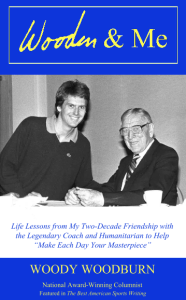


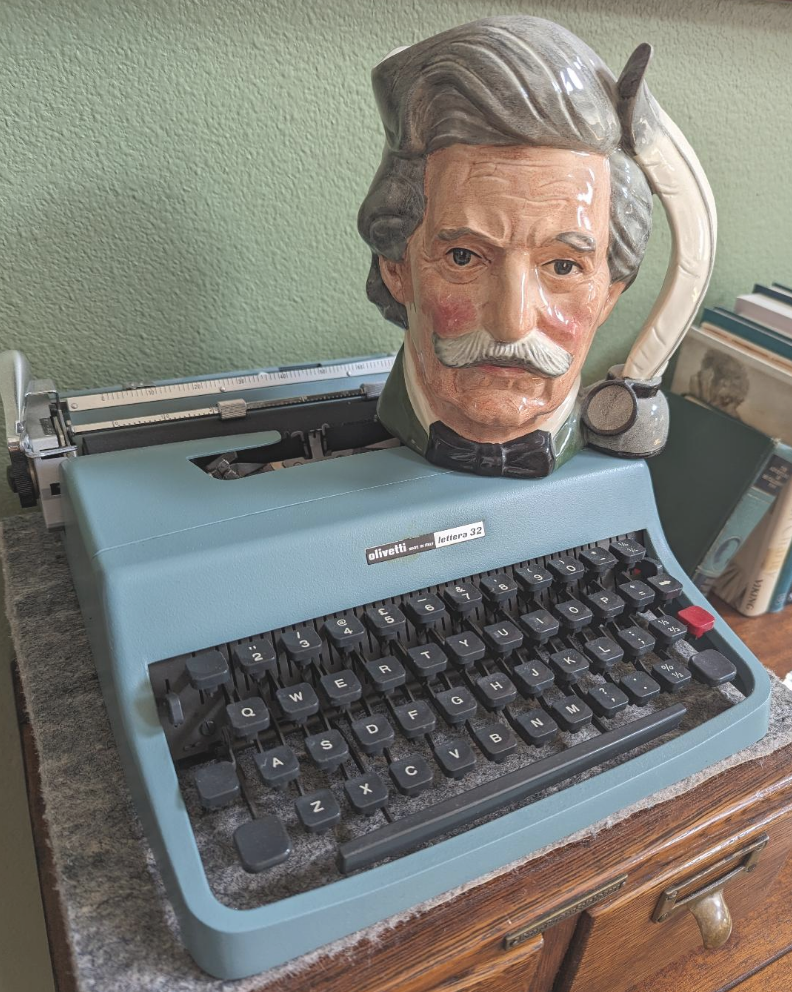


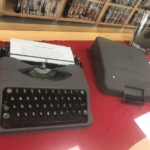
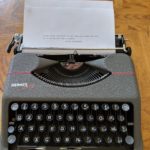
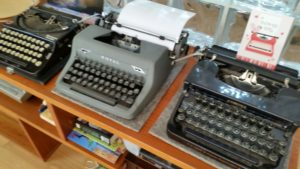
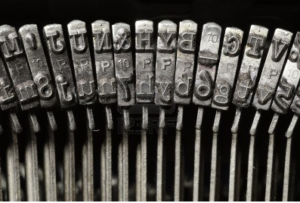
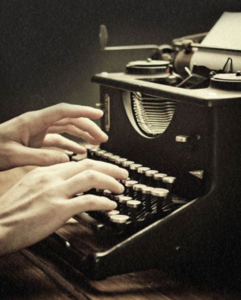
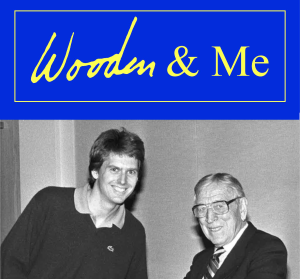 Check out my memoir WOODEN & ME: Life Lessons from My Two-Decade Friendship with the Legendary Coach and Humanitarian to Help “Make Each Day Your Masterpiece” and my essay collection “Strawberries in Wintertime: Essays on Life, Love, and Laughter” …
Check out my memoir WOODEN & ME: Life Lessons from My Two-Decade Friendship with the Legendary Coach and Humanitarian to Help “Make Each Day Your Masterpiece” and my essay collection “Strawberries in Wintertime: Essays on Life, Love, and Laughter” …